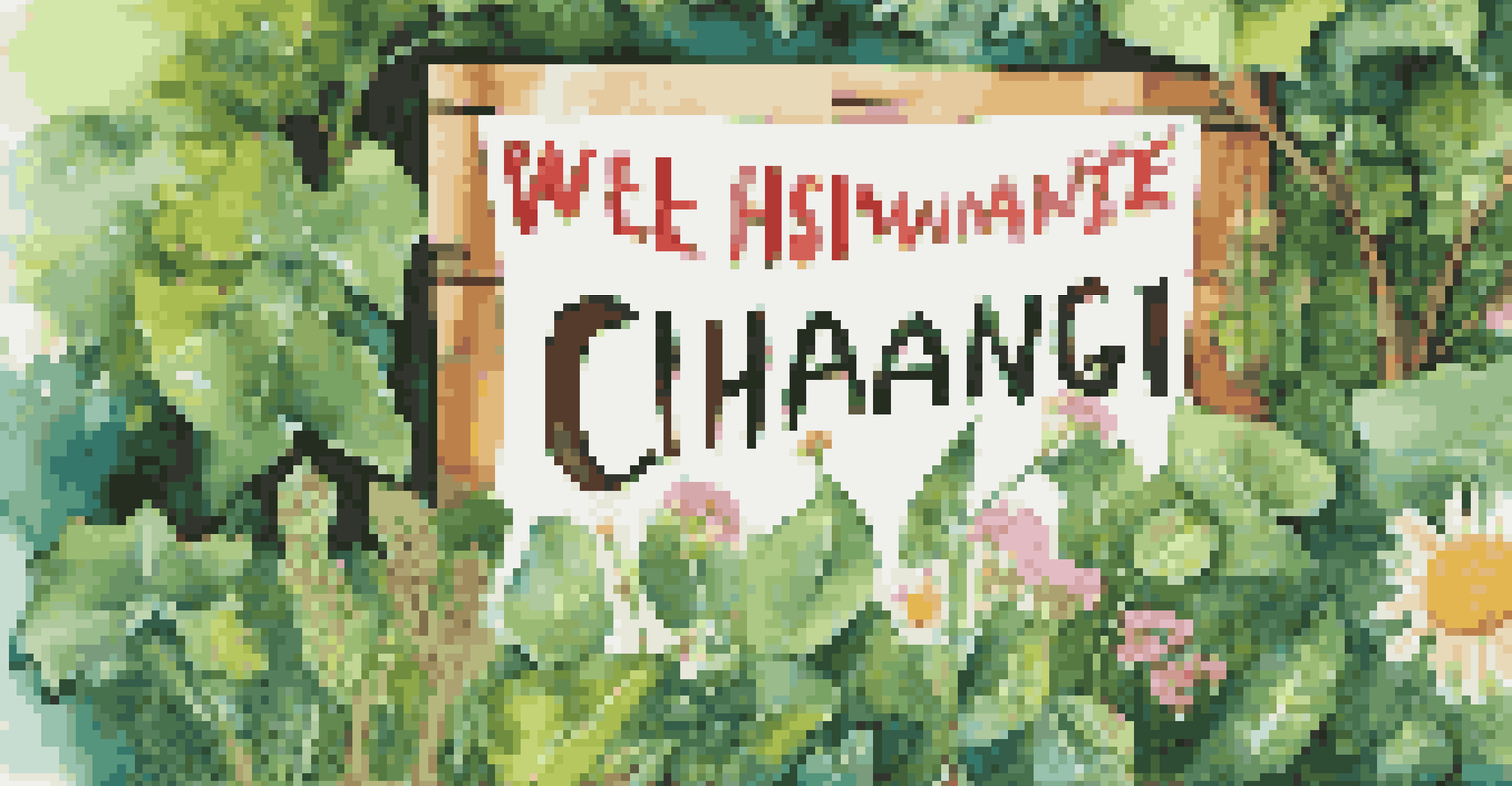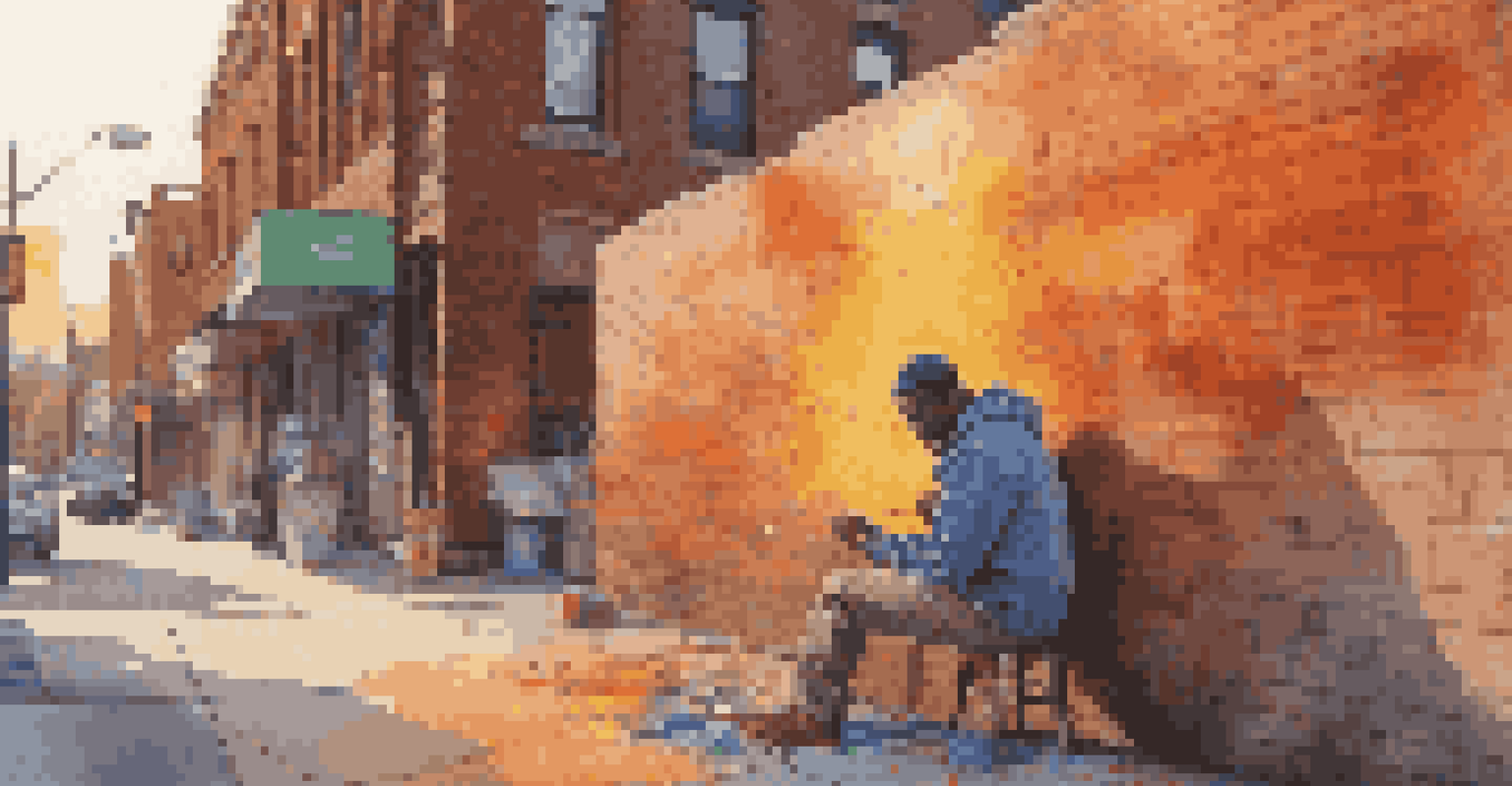The Influence of Social Media Art on Activism

Understanding Social Media Art in Activism
Social media art serves as a powerful tool for activism, merging creativity with social causes. It often takes the form of illustrations, memes, videos, and animations that convey messages quickly and effectively. This blend of art and activism allows for complex ideas to be expressed in relatable and accessible formats, making it easier for audiences to engage.
Art is not a mirror held up to society, but a hammer with which to shape it.
For instance, consider the viral nature of a meme that highlights social injustice. Within seconds, it can be shared across platforms, reaching thousands or even millions of users. This rapid dissemination of information and emotion can inspire people to take action, whether by attending protests, signing petitions, or spreading awareness.
Moreover, social media platforms provide artists with a stage to showcase their work without barriers. This democratization of art means that anyone, regardless of their background, can participate in the conversation and advocate for change through their creativity.
The Role of Visual Storytelling in Activism
Visual storytelling is a core element of social media art that resonates deeply with audiences. By combining images with narratives, artists can evoke emotions that text alone might struggle to achieve. A compelling illustration or powerful photograph can tell a story that captures the essence of an issue, often leading to a stronger emotional connection.

Take, for example, the use of striking visuals during the Black Lives Matter movement. Powerful images of protests, coupled with poignant captions, have effectively conveyed the urgency of social justice issues. These visuals not only inform but also inspire action, making the cause more relatable to a broader audience.
As people scroll through their feeds, they are more likely to stop and engage with art that tells a story. This engagement can lead to discussions, shares, and ultimately, a collective movement for change, demonstrating the importance of visual storytelling in modern activism.
Hashtags: Amplifying Social Media Art's Reach
Hashtags play a crucial role in the visibility of social media art relating to activism. They act as digital signposts, guiding users to specific movements or themes. When artists use popular or trending hashtags, their work can reach audiences beyond their immediate followers, expanding the conversation.
The role of the artist is to make the revolution irresistible.
For instance, during climate strikes, hashtags like #FridaysForFuture or #ClimateStrike have united various artists under a common cause. By tagging their artwork with these hashtags, they contribute to a larger collective voice advocating for environmental change. This interconnectedness amplifies their reach and impact.
As a result, hashtags not only categorize content but also build community. They invite others to join the conversation and create a sense of solidarity among activists, reinforcing the idea that art can unite people toward a common goal.
The Impact of Viral Challenges on Activism
Viral challenges on social media have emerged as a unique form of activism through art. These challenges often encourage users to create and share content that raises awareness about specific issues. For example, the Ice Bucket Challenge effectively raised funds and awareness for ALS, demonstrating how creativity can drive change.
When participants engage in these challenges, they often add their artistic flair, further enhancing the message. This creative expression can take many forms, from dance videos to artistic interpretations, making the movement more engaging and relatable to a wider audience.
Moreover, these challenges can create a sense of urgency and excitement around a cause, motivating people to participate. The blend of fun and advocacy demonstrates how social media art can inspire collective action in innovative and entertaining ways.
Art as a Form of Resistance
Art has long served as a form of resistance, and social media amplifies this effect in contemporary activism. Artists often use their work to challenge oppressive systems and inspire change. This resistance can manifest through powerful imagery that critiques societal norms or advocates for marginalized voices.
Consider the art created during political protests, where graffiti or posters often carry strong messages of dissent. Through social media, these pieces can reach a global audience, inspiring solidarity among those who share similar struggles. The art becomes a rallying cry, encouraging others to join the fight.
In this way, social media art not only documents resistance but also energizes movements. It fosters a sense of identity and purpose among activists, reinforcing the idea that art can be a vital part of the struggle for justice.
The Intersection of Identity and Activism in Art
Social media art often explores the intersection of identity and activism, reflecting the diverse experiences of individuals. Artists use their platforms to express their unique perspectives on race, gender, sexuality, and other aspects of identity. This representation is crucial for fostering inclusivity and understanding within activist movements.
For example, LGBTQ+ artists frequently use their work to highlight issues facing their community, creating pieces that resonate with both personal and collective experiences. By sharing these perspectives, they invite audiences to empathize and engage with causes that may not directly affect them but are nonetheless important.
This celebration of diversity through art not only enriches the narrative of activism but also empowers marginalized voices. It serves as a reminder that activism is most effective when it is rooted in the lived experiences of those it seeks to represent.
The Future of Social Media Art in Activism
As technology continues to evolve, the future of social media art in activism looks promising. Emerging platforms and tools are likely to provide new avenues for artistic expression and advocacy. With augmented reality (AR) and virtual reality (VR) gaining traction, activists may explore innovative ways to engage audiences and convey their messages.
Moreover, as younger generations become more involved in social issues, we can expect a surge in creative activism driven by social media art. These digital natives are adept at using technology to their advantage, harnessing their creativity to address pressing societal challenges.

Ultimately, the fusion of social media and art will continue to shape the landscape of activism. By embracing new technologies and platforms, artists and activists can collaborate to create a more equitable and just world, inspiring future generations to take up the mantle of change.